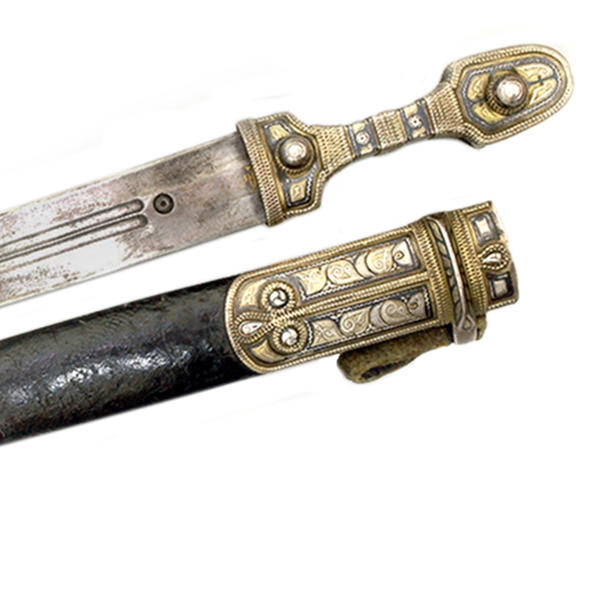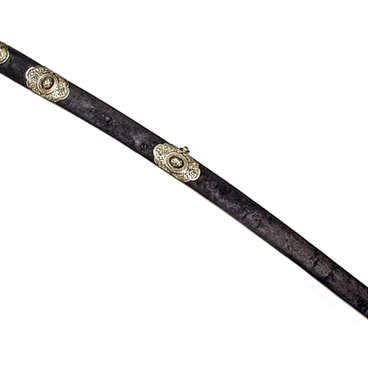From time immemorial, a poniard has been an inseparable element of the Circassian national costume. Adyghe ethnographer and folklorist Khan Girey wrote:
Circassian poniard in a sheath
Время создания
Early 19th century
Техника
Silver, steel, leather, wood. Forging, chasng, engraving, niello, granulation
#1
Circassian poniard in a sheath
#2
#4
‘This weapon could be regarded as part of the Circassan’s outer clothes, especially with the best, top-class warriors who would only part with their poniard when they shed their outer dress. The Circassian eats, drinks, speaks, or entertains himself always with a poniard on this girdle, and sleeps with it under his cushion. He has the whole of his weapons attached to his person; therefore he is always armed.’
#5
Scholars classify various Circassian poniards into three groups – combat, ceremonial and children’s ones.
#6
The combat poniard was drastically different from other types of weapons. Its hilt was always full-size, which enabled holding it in a tight grip even in hottest and closest combat. Owing to a high quality of forging, carefully selected materials and blade size, effective, often deathly strikes could be delivered with this formidable weapon.
It was not customary to decorate combat poniards ornately. Traditionally, the hilt and the sheath would have minimum gold and silver decoration or none at all. The hilt was mainly made from black horn, less frequently - from bone. It would have two or three iron rivets or small silver onlays with traditional ornaments.
#8
Together with other elements of the costume and other weapons, the ceremonial poniard was meant to emphasise the status of the owner, both as a man and as a warrior, as well as reflecting his position in society.
#9
Circassians could begin wearing children’s poniards from their teens. Armourers made them specially for boys; so the hilt and the blade were made to match their height and body build. Such poniards mainly performed sacral and ceremonial functions. They were given to Circassian youngsters when they graduated from childhood to manhood and acquired respective rights and duties to their clan and to society. The status and estate of the future owner’s family determined how ornately a poniard was decorated.
читать дальшескрыть
00:00
00:00
1x
Circassian poniard in a sheath
Время создания
Early 19th century
Техника
Silver, steel, leather, wood. Forging, chasng, engraving, niello, granulation
Открыть в приложении
Поделиться


